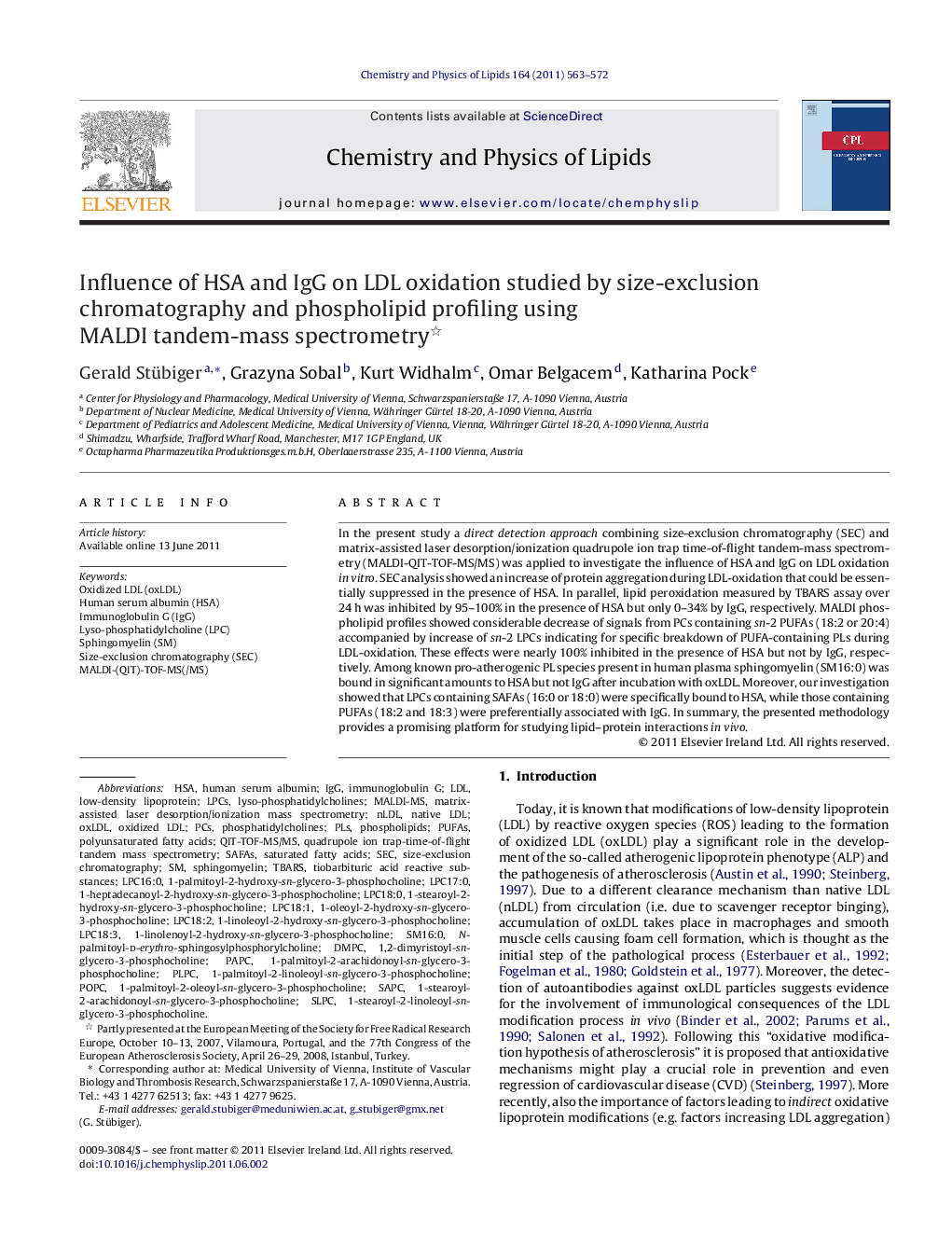| Article ID | Journal | Published Year | Pages | File Type |
|---|---|---|---|---|
| 1253380 | Chemistry and Physics of Lipids | 2011 | 10 Pages |
In the present study a direct detection approach combining size-exclusion chromatography (SEC) and matrix-assisted laser desorption/ionization quadrupole ion trap time-of-flight tandem-mass spectrometry (MALDI-QIT-TOF-MS/MS) was applied to investigate the influence of HSA and IgG on LDL oxidation in vitro. SEC analysis showed an increase of protein aggregation during LDL-oxidation that could be essentially suppressed in the presence of HSA. In parallel, lipid peroxidation measured by TBARS assay over 24 h was inhibited by 95–100% in the presence of HSA but only 0–34% by IgG, respectively. MALDI phospholipid profiles showed considerable decrease of signals from PCs containing sn-2 PUFAs (18:2 or 20:4) accompanied by increase of sn-2 LPCs indicating for specific breakdown of PUFA-containing PLs during LDL-oxidation. These effects were nearly 100% inhibited in the presence of HSA but not by IgG, respectively. Among known pro-atherogenic PL species present in human plasma sphingomyelin (SM16:0) was bound in significant amounts to HSA but not IgG after incubation with oxLDL. Moreover, our investigation showed that LPCs containing SAFAs (16:0 or 18:0) were specifically bound to HSA, while those containing PUFAs (18:2 and 18:3) were preferentially associated with IgG. In summary, the presented methodology provides a promising platform for studying lipid–protein interactions in vivo.
► MALDI-QIT-TOF-MS/MS was applied to study influence of HSA and IgG on LDL oxidation. ► MALDI phospholipid profiles showed degradation of PUFA-PC and increase sn-2 LPC. ► Lipid peroxidation was inhibited by 95–100% in the presence of HSA. ► IgG did not protect LDL-bound PC from oxidation and degradation to same extent. ► sn-2 saturated LPC and sphingomyelin were specifically bound from oxLDL to HSA.
